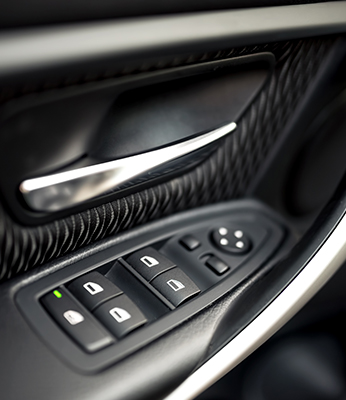Angebot anfordern
Ultramid® Vision
- Startseite
- Lieferantenprodukte
- BASF
- Ultramid® Vision

Das erste halbtransparente Polyamid
BASF ist es nun gelungen, mit Ultramid® Vision das erste teilkristalline Polyamid zu entwickeln, das Licht weitgehend ungehindert durchlässt. Im Vergleich zu opaken Standardpolyamiden weist Ultramid® Vision eine sehr hohe Lichtdurchlässigkeit bei geringer Lichtstreuung auf.

Ultramid® Vision hat physikalische und thermische Eigenschaften, die weitgehend mit denen herkömmlicher, unverstärkter PA6-Compounds vergleichbar sind, unterscheidet sich aber durch die außergewöhnlichen optischen Eigenschaften deutlich von diesen.
Zusätzlich zur ungefärbten Basissorte Ultramid® Vision B3K UN besteht die Möglichkeit zur Herstellung spezieller Produkte, die neben einer hohen Lichtdurchlässigkeit auch eine diffuse Lichtstreuung aufweisen (Ultramid® Vision B3K DLT*). Kunden können auch speziell gefärbte Produkte erwerben. Alternativ kann Ultramid® Vision mit Farb-Masterbatches auf Polyamidbasis eingefärbt werden, erhältlich z. B. von BASF Color Solutions.
Ultramid® Vision kann für die Herstellung von Komponenten in verschiedenen Branchen verwendet werden. Es eignet sich besonders dann, wenn diese Komponenten eine Sichtkontrolle, ein optisch ansprechendes Lichtdesign oder eine Beleuchtung bieten sollen. Das einzigartige Polyamid ist UV- und temperaturbeständig, kratzfest und verfügt über die für Polyamide üblichen flammhemmenden Eigenschaften. Als Polyamid zeichnet es sich außerdem durch eine einzigartige chemische Beständigkeit im Vergleich zu anderen transparenten thermoplastischen Materialien auf dem Markt aus.Zu den Merkmalen und Eigenschaften der Ultramid®-Produktreihen gehören:

Im Vergleich zu undurchsichtigen Standardpolyamiden weist Ultramid Vision eine sehr hohe Lichtdurchlässigkeit bei geringer Lichtstreuung auf und eignet sich daher für Leuchtsymbole an Fensterhebern und die Verstellung der Außenspiegel. Typische Anwendungsgebiete sind: